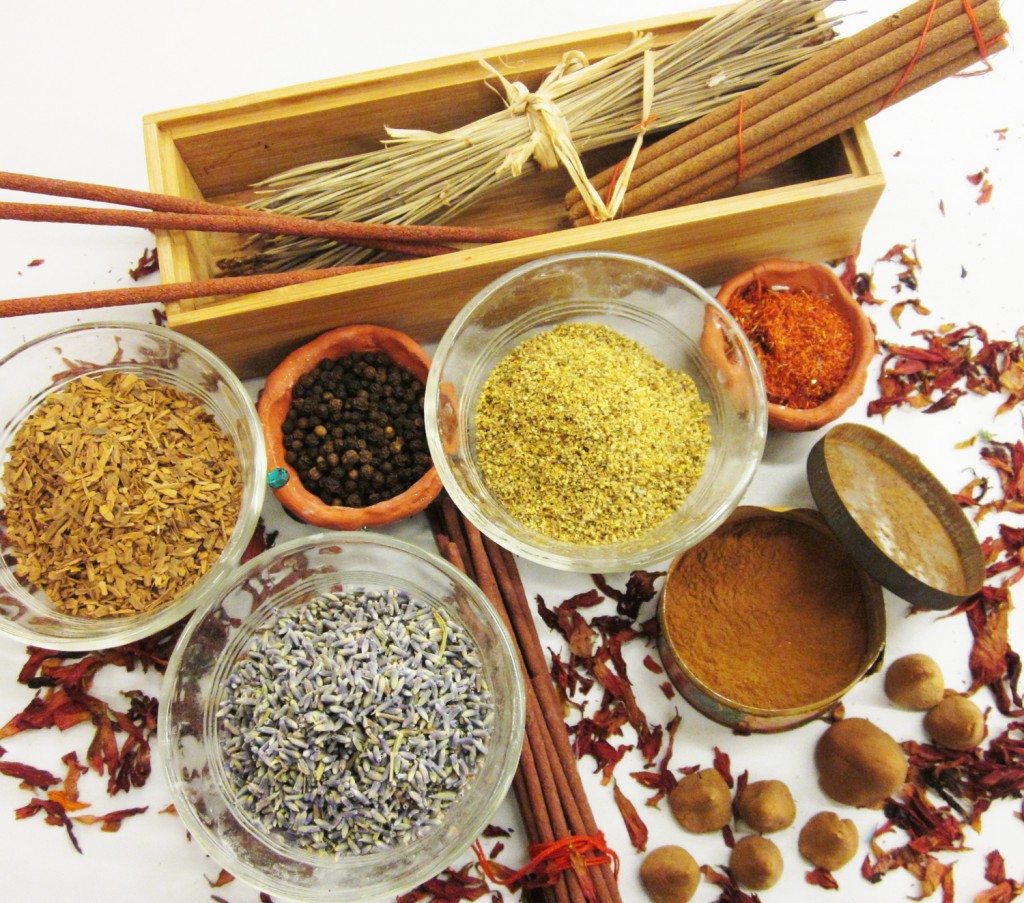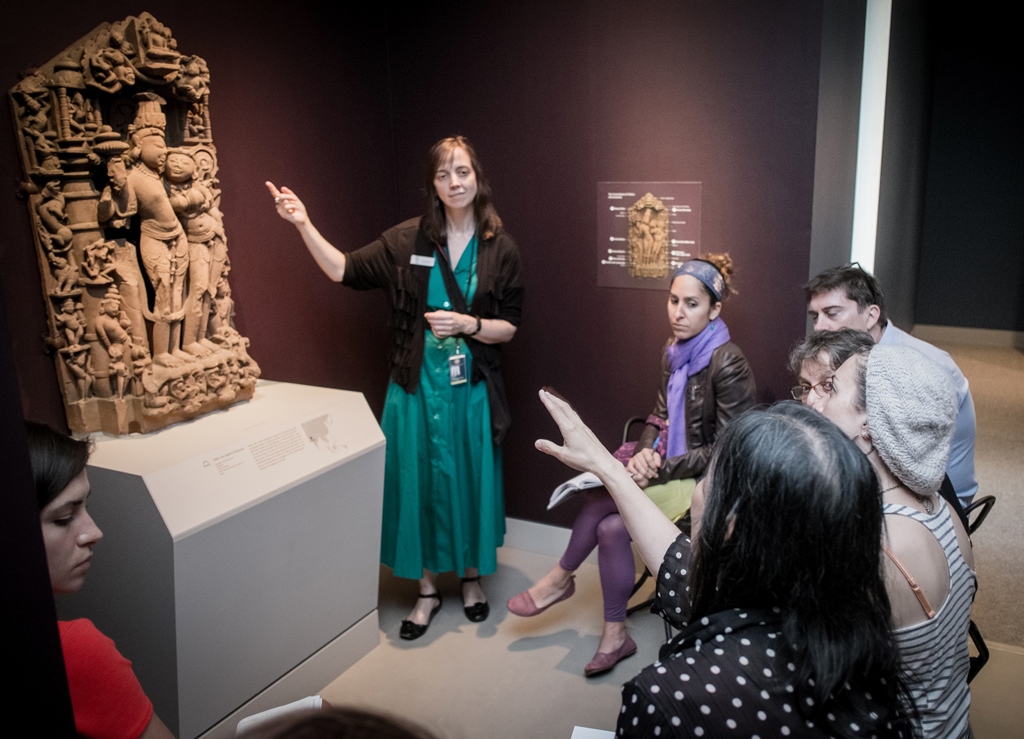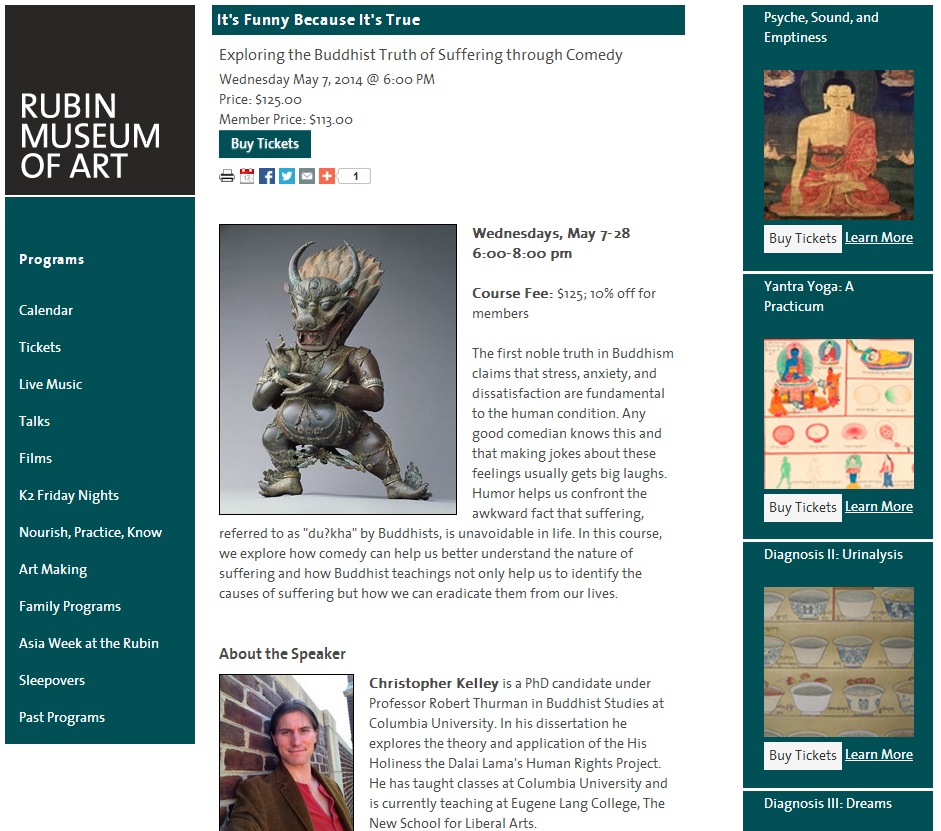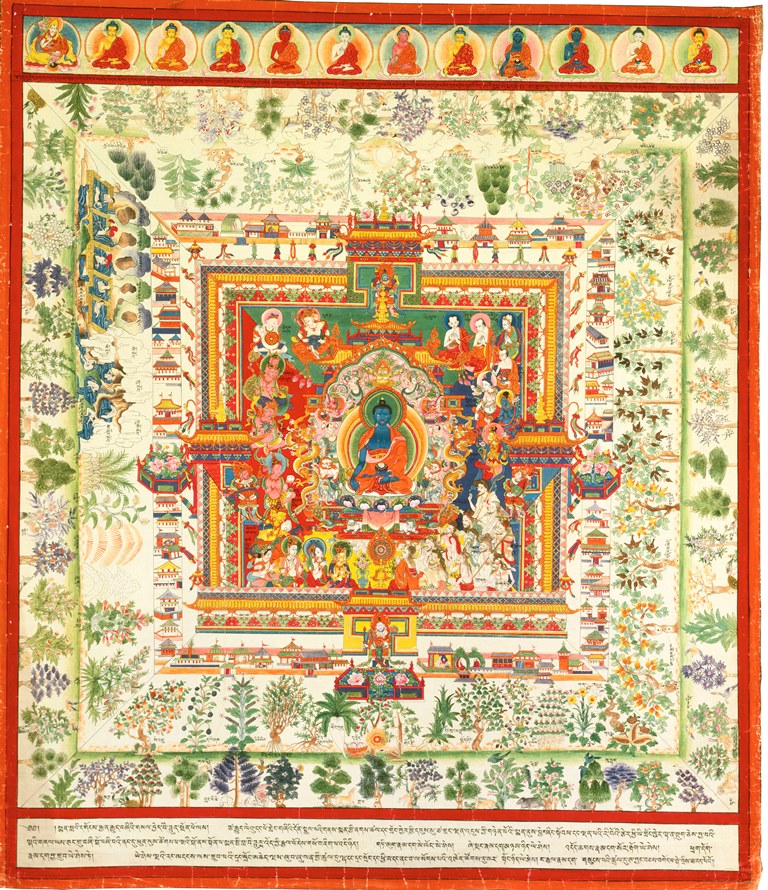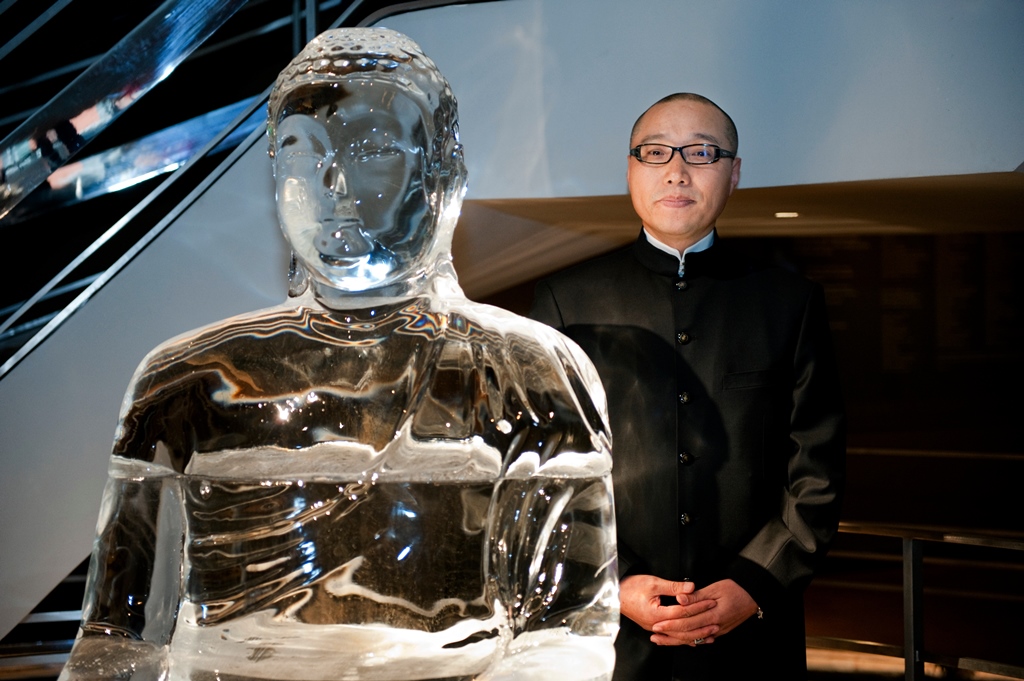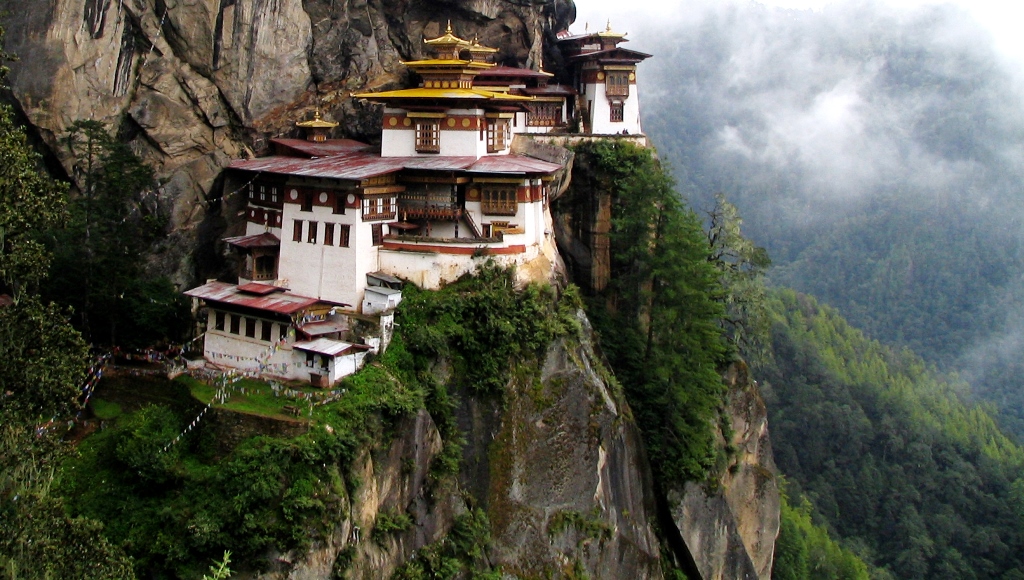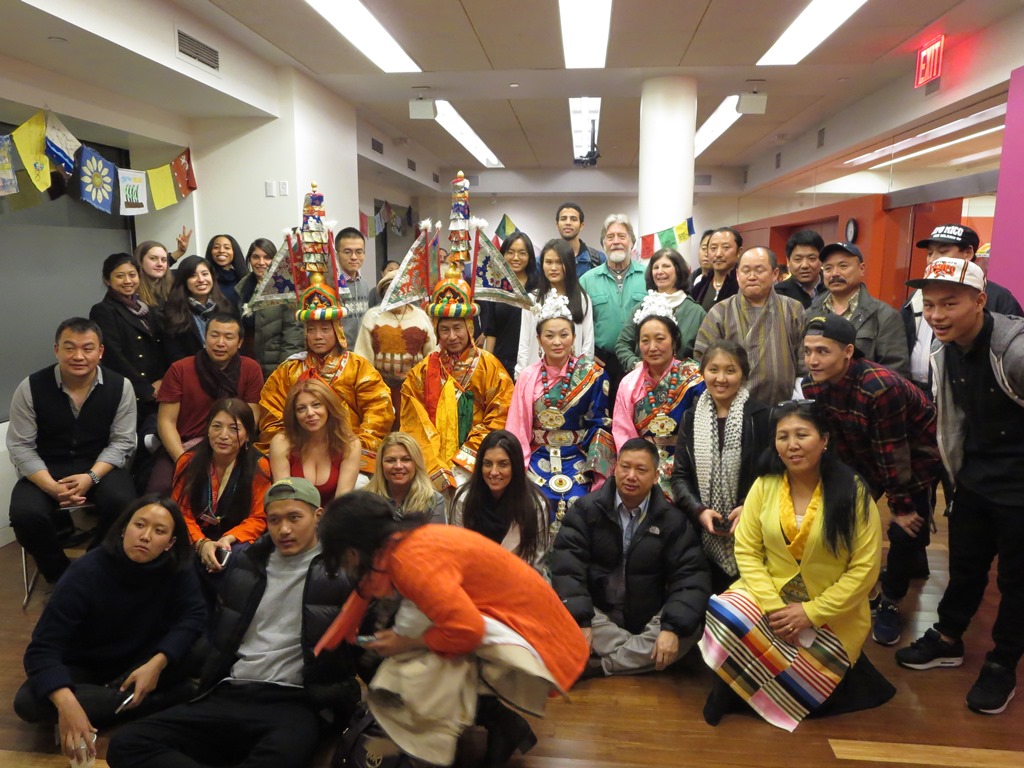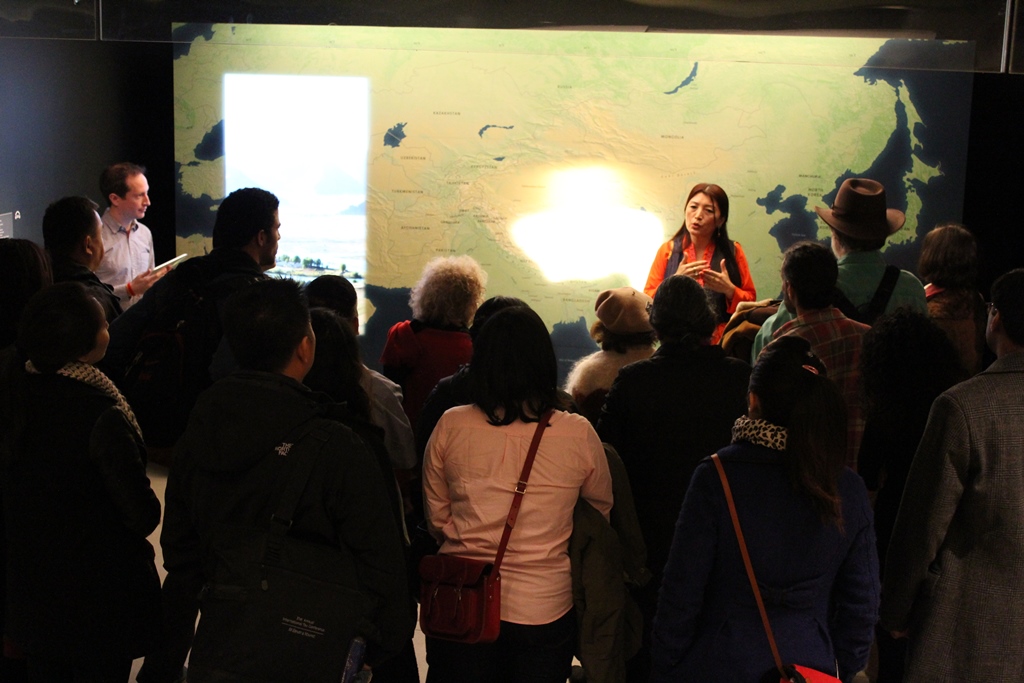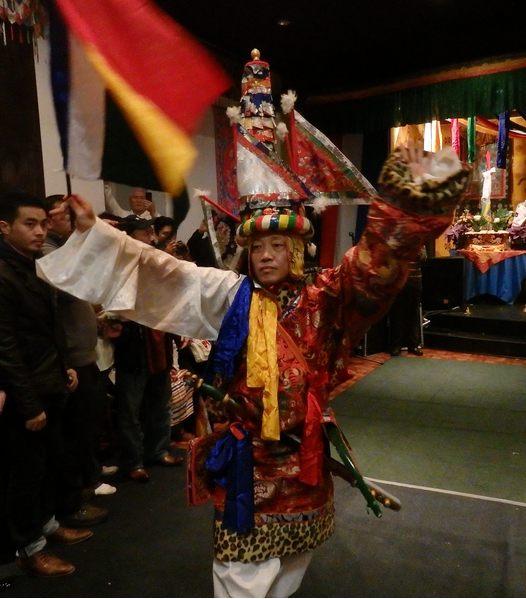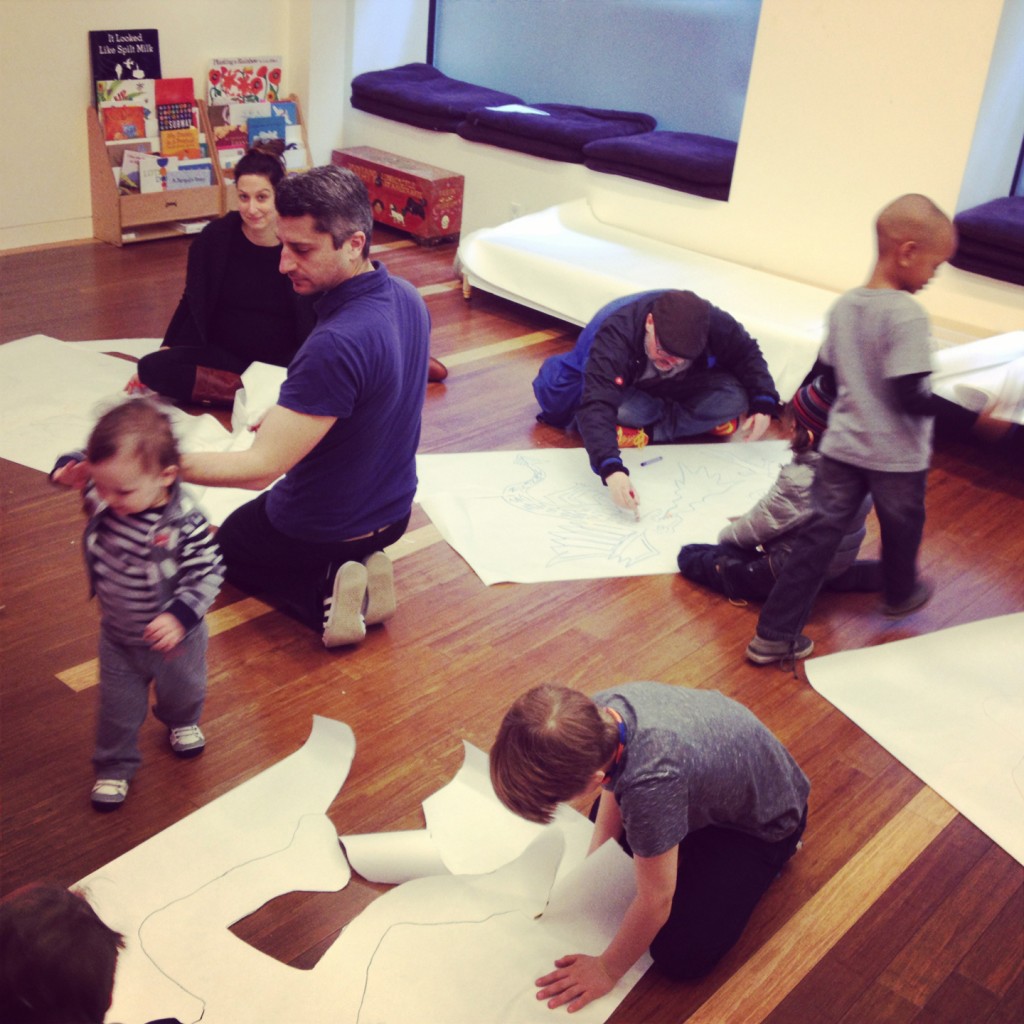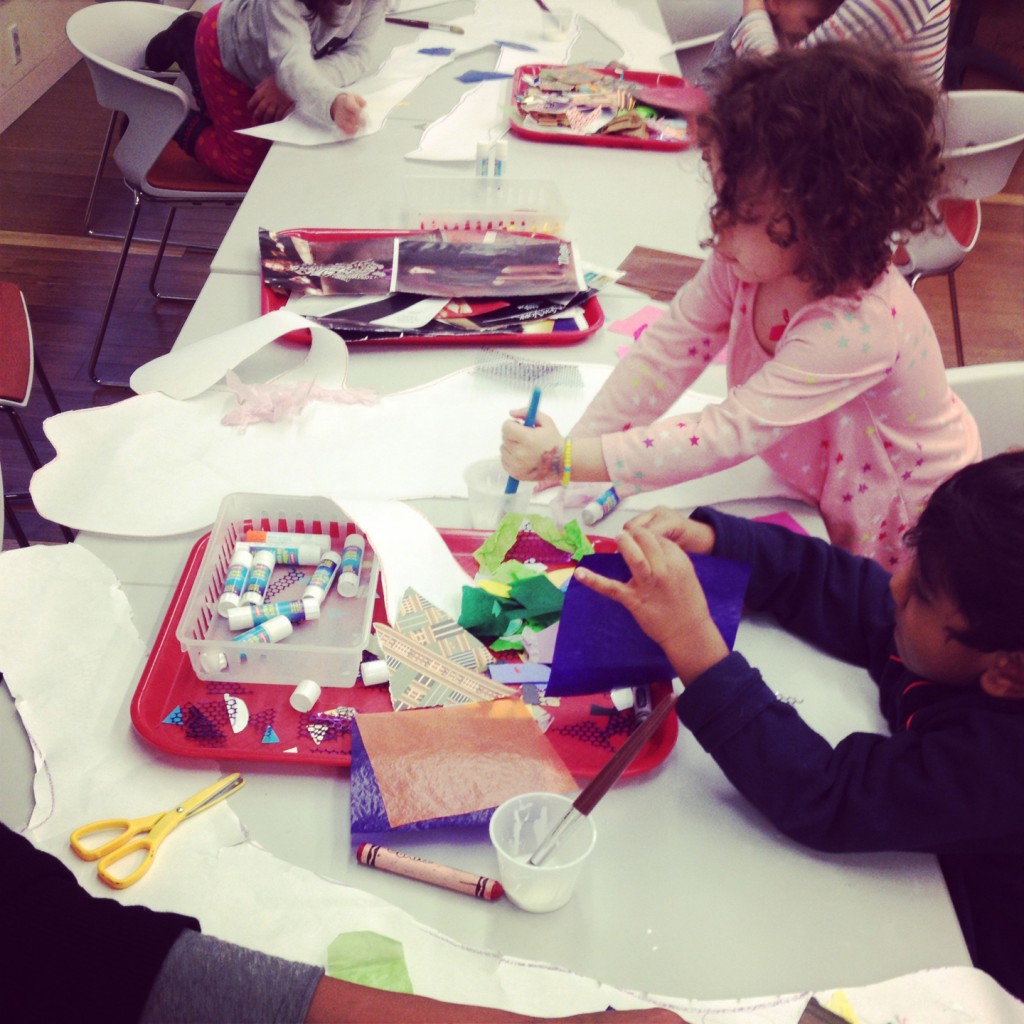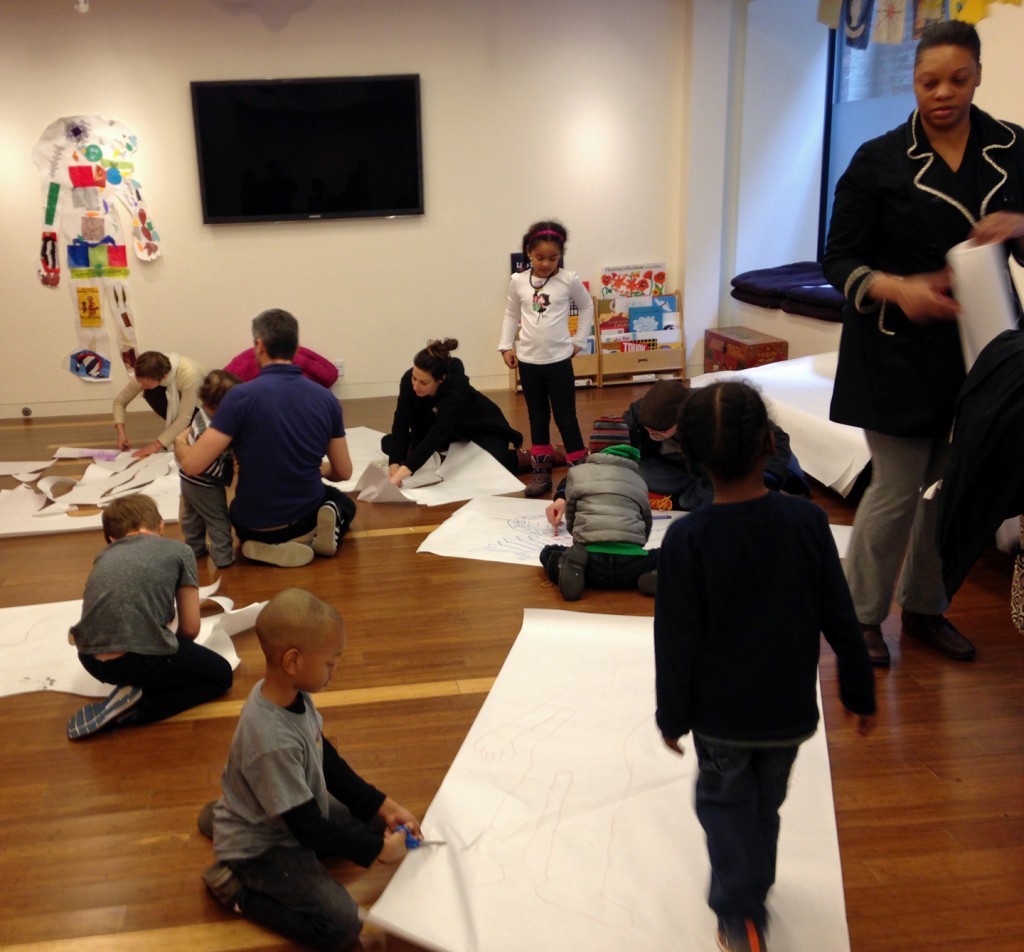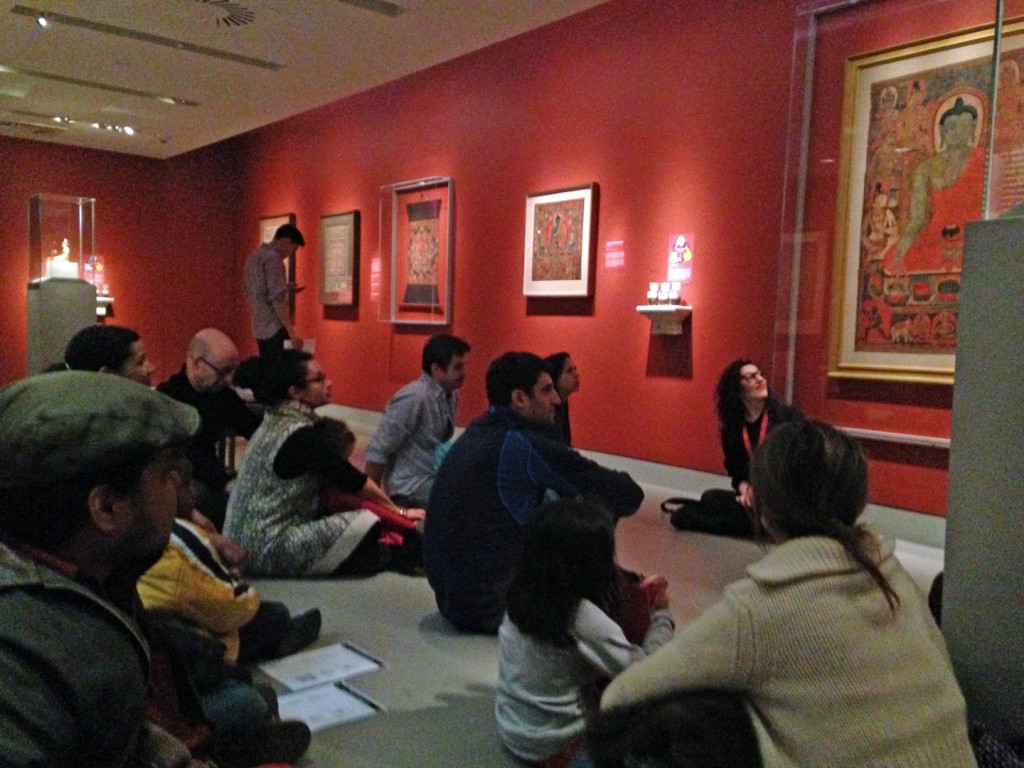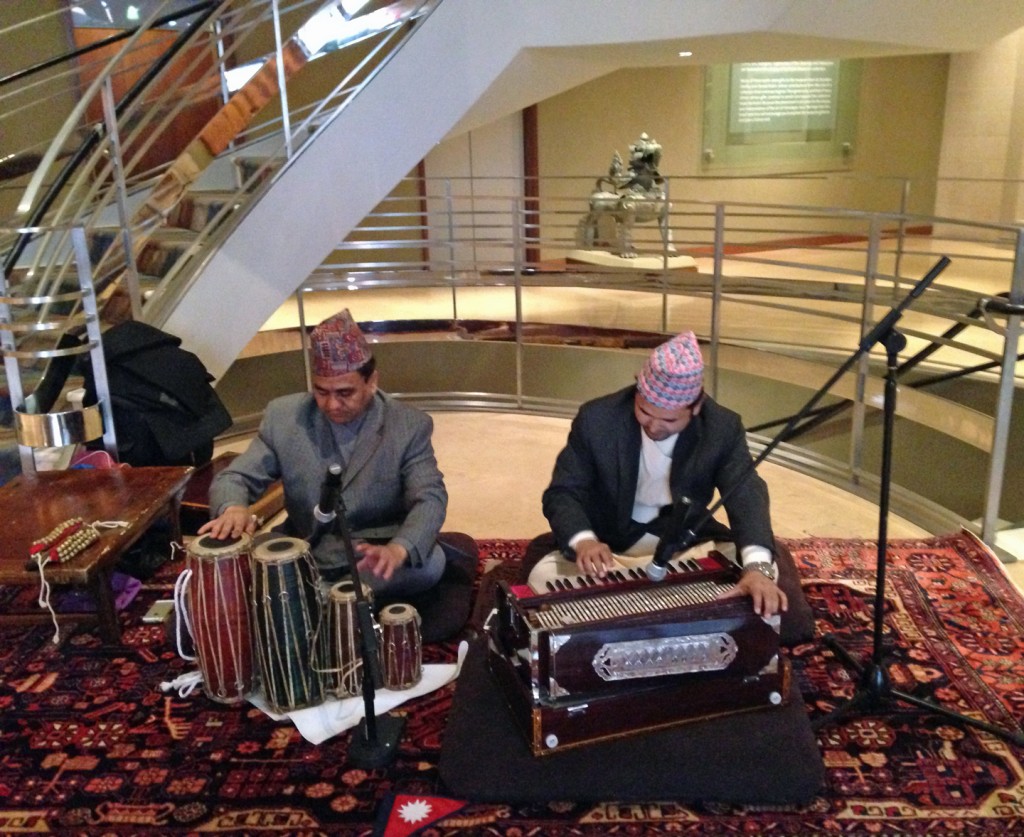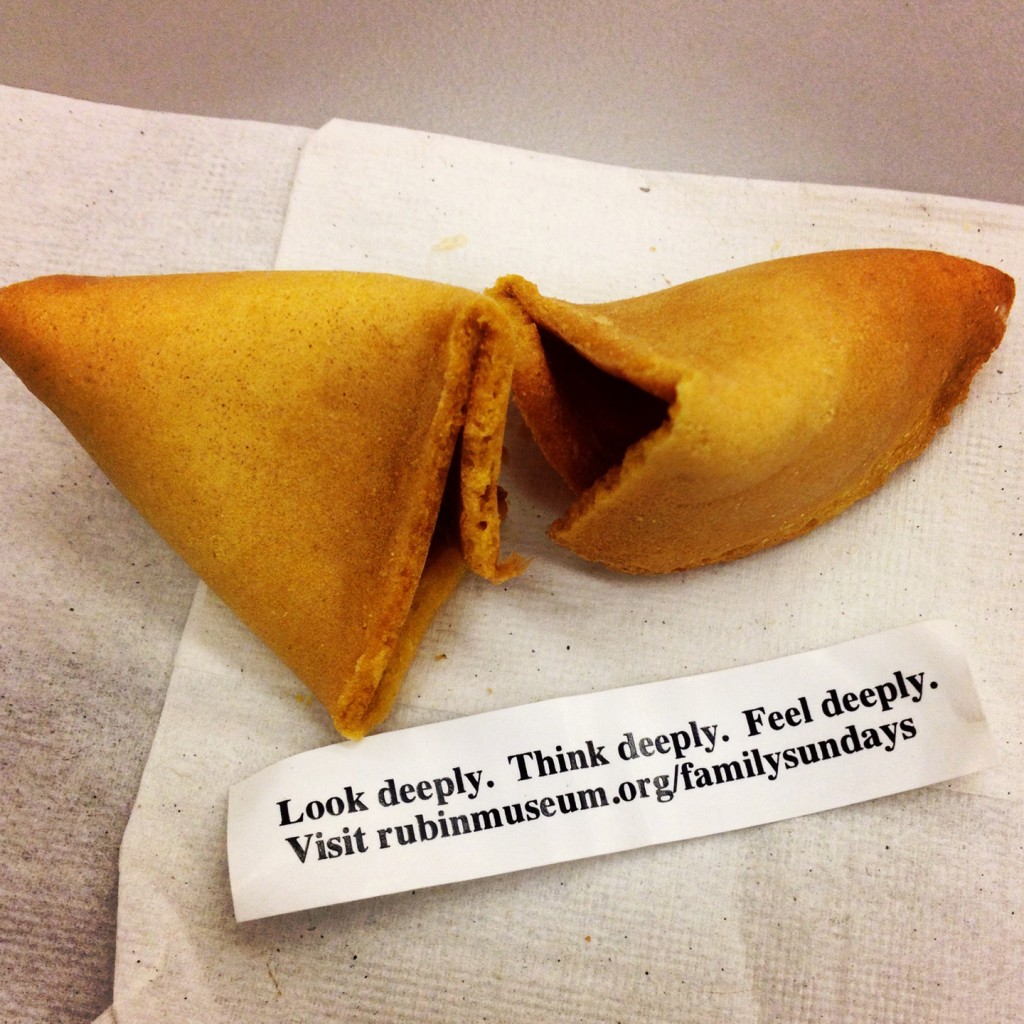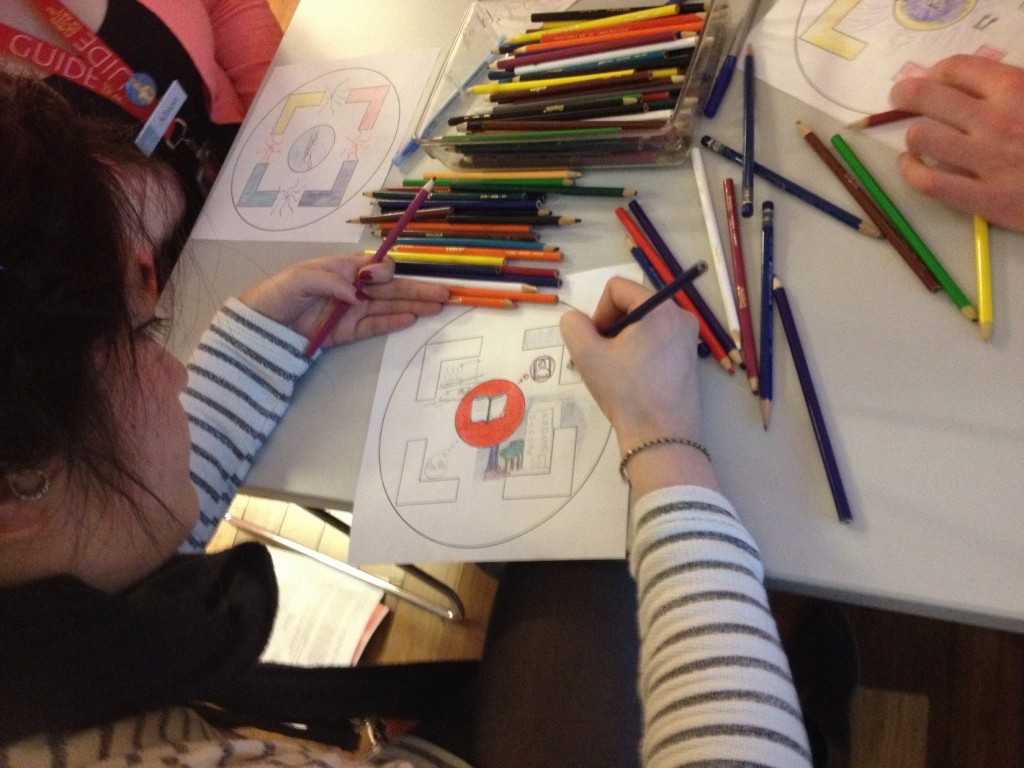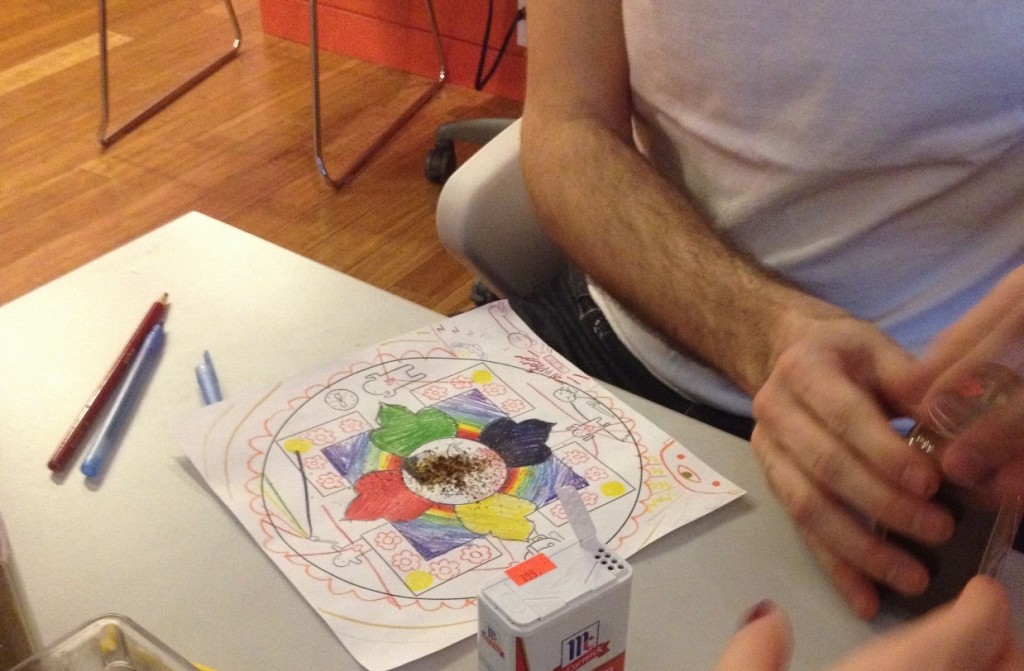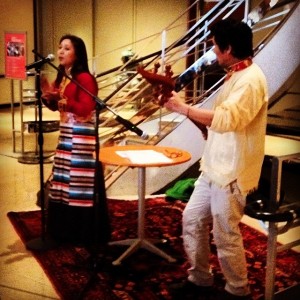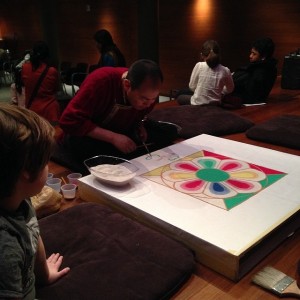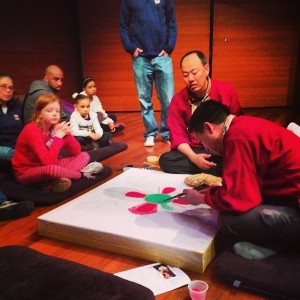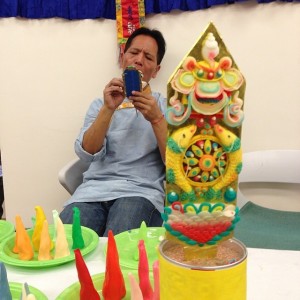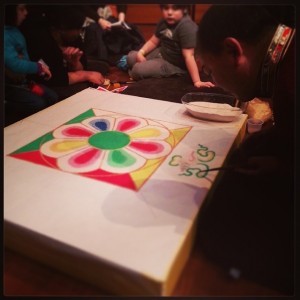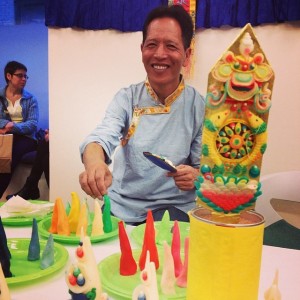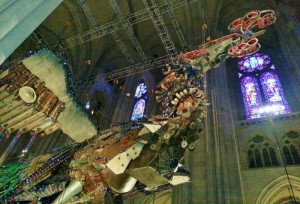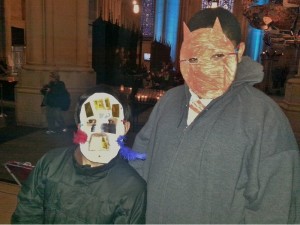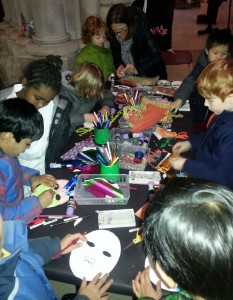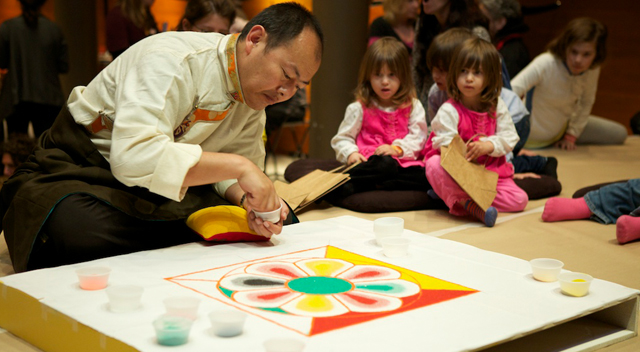In early March Family Programs led the Museum in a celebration of Losar, the Tibetan New Year, with our annual Losar Family Day. With its many moving parts, this celebration required participation from nearly every department in the Museum. Because of tremendous support from many staff members and volunteers (from Teen Programs and JPMorgan Chase), we had yet another fantastic Family Day with over 300 people in attendance!
Participants in our Teen Programs began the day by creating beautiful sidewalk art to welcome guests and lead the way from the Museum to the Education Center. “Losar La Tashi Delek” was a new phrase to many visitors, who soon discovered its meaning, “Happy New Year” in Tibetan, while enjoying the day’s festivities.

Upon entering the Museum, families jumped into art-making by joining our mini prayer flag activity. Traditional Himalayan woodblocks were used to create small rubbings that were strung together to create a mini prayer flag. Many of the children decided to wear their’s in honor of the celebration.
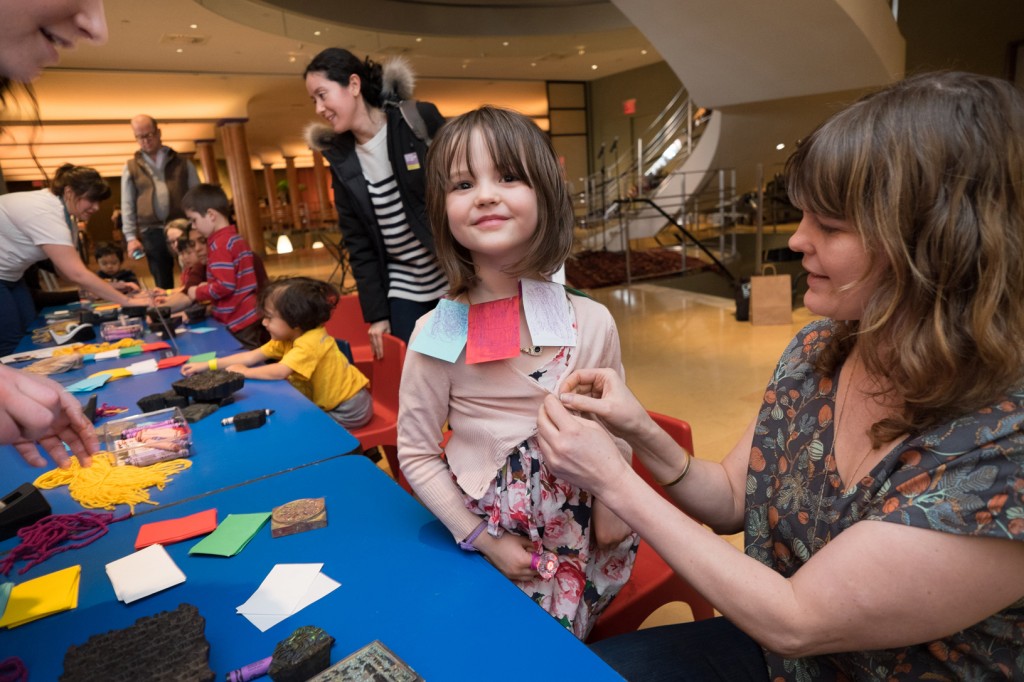
Next to the mini prayer flag making station, were our spiral musicians, Tenzin Dolker and Kunga Gyaltsen, playing traditional Tibetan music for the families. They had full participation from many of the children and adults, getting many to clap, dance, and sing along.
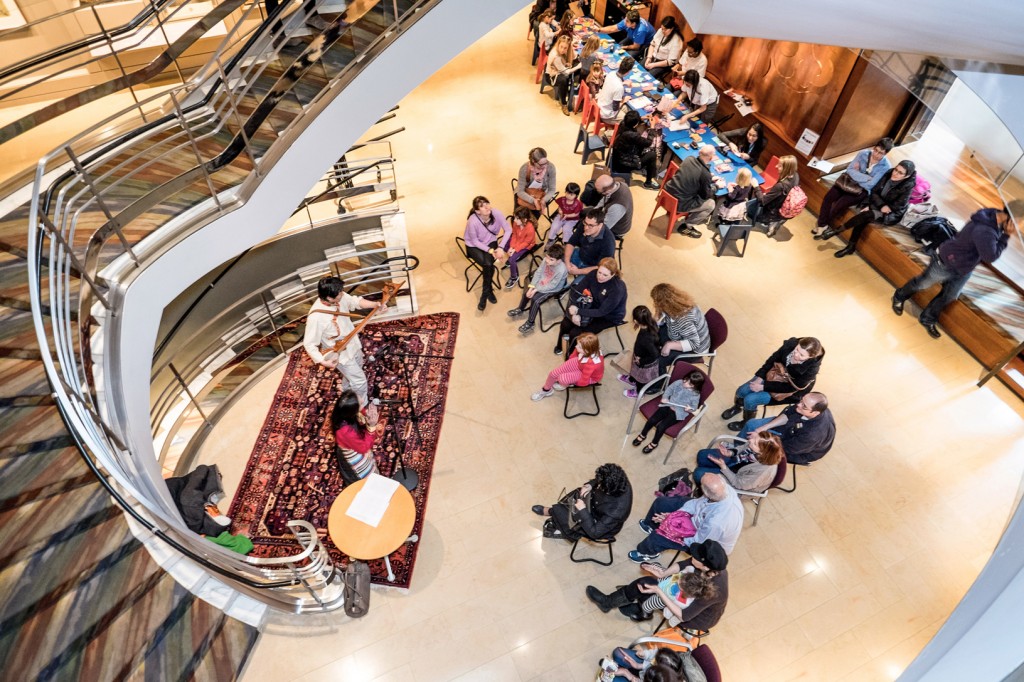
Harry and Laura Browarny lead our Family Tours (each leading up to 30 people!) and got all of the children involved through interactive storytelling and posing. I overheard many of the children sharing with their parents things they learned on their tour…I always find it inspiring to hear our youngest visitors express how excited they are about learning at the Rubin.
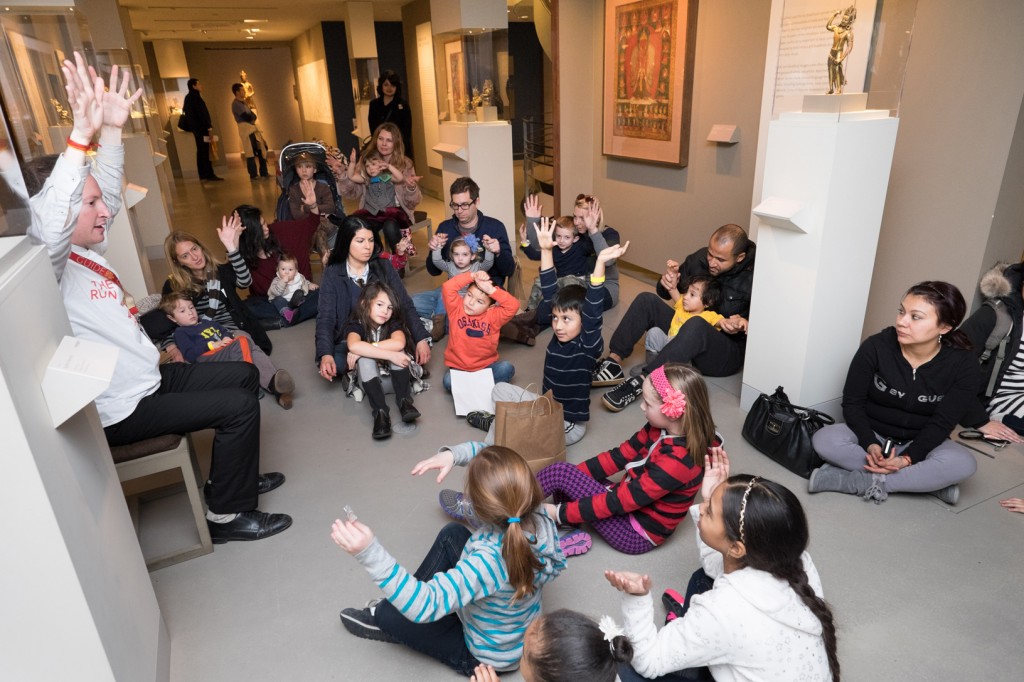
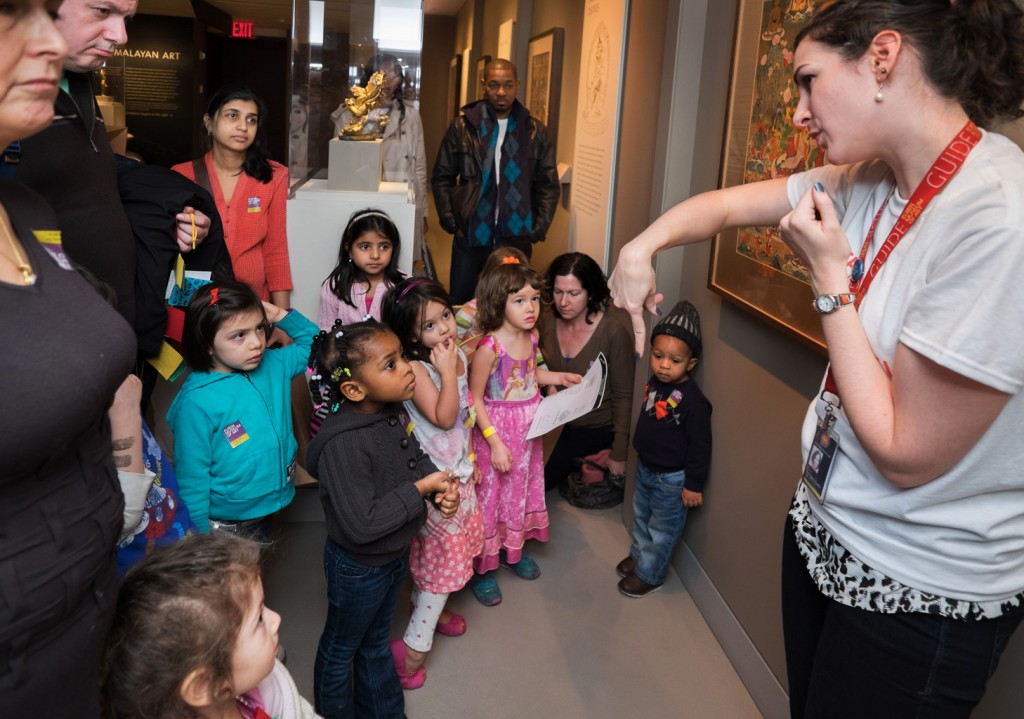
In our theater we had some of the most popular activities of Losar Family Day taking place. Families worked together to create a giant collaborative mandala on the theater floor. Children chose from a variety of different colored recycled materials (many found at Materials for the Arts) to fill in the giant mandala and appeared to have a blast dispensing their creative energies into the giant artwork.
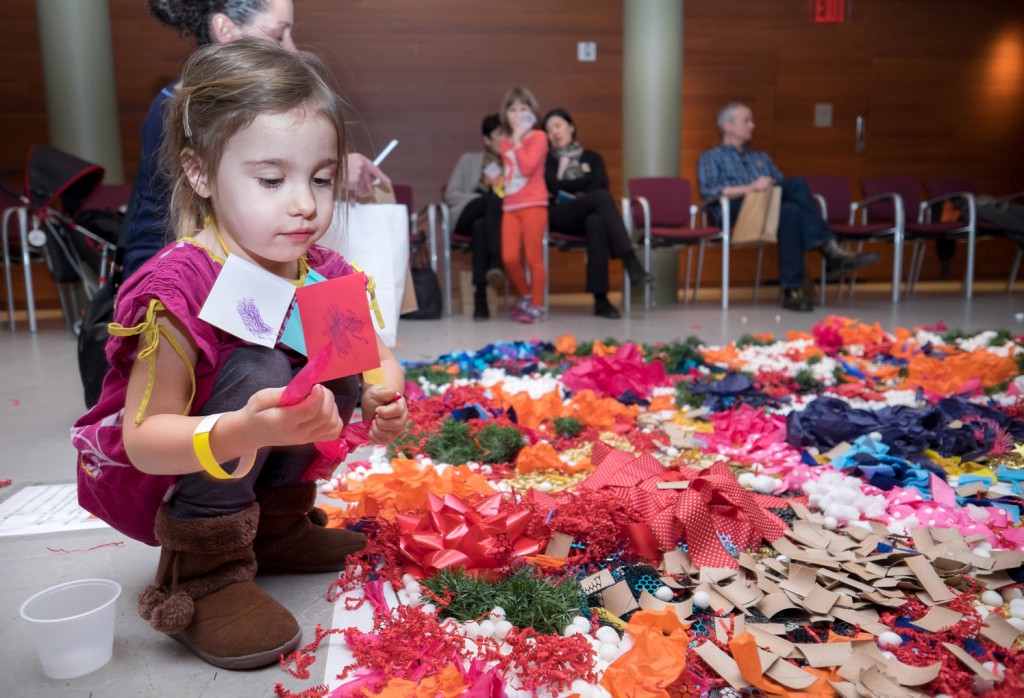
On the theater stage we featured our two sand mandala artists, Jangpa Phunsum and Dorjee Gombu, who created a stunning and detailed sand mandala. Families were invited onto the stage to observe the process throughout the afternoon.
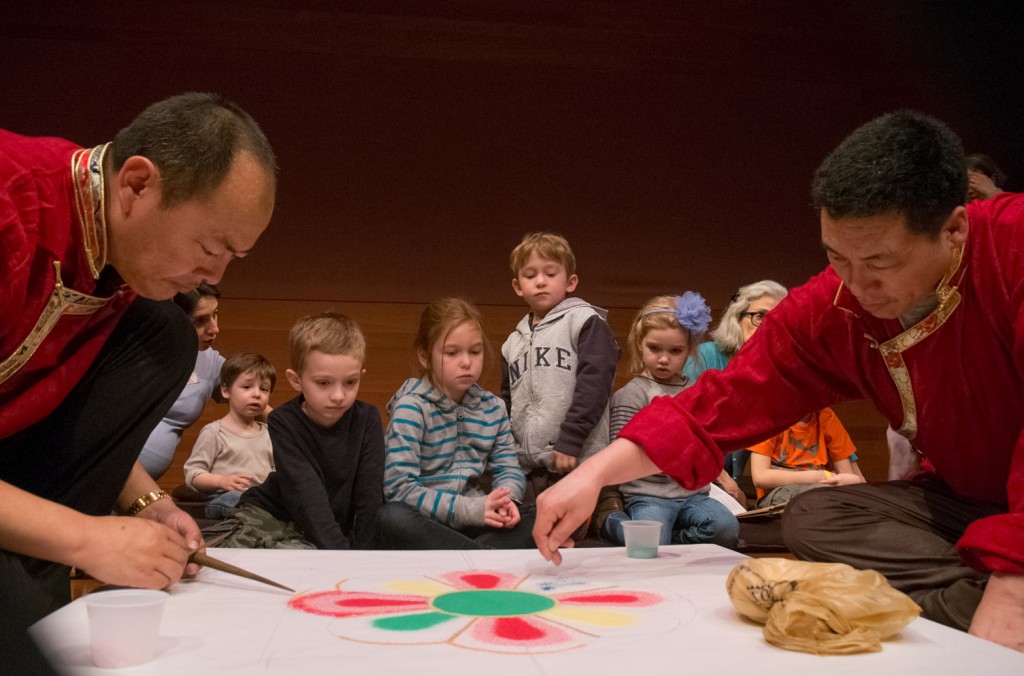
At the end of the day, we all gathered together to watch the sand mandala be swept away – allowing the children a first hand experience with the concept of impermanence. Many watched in awe as hours of work were gently swept away.
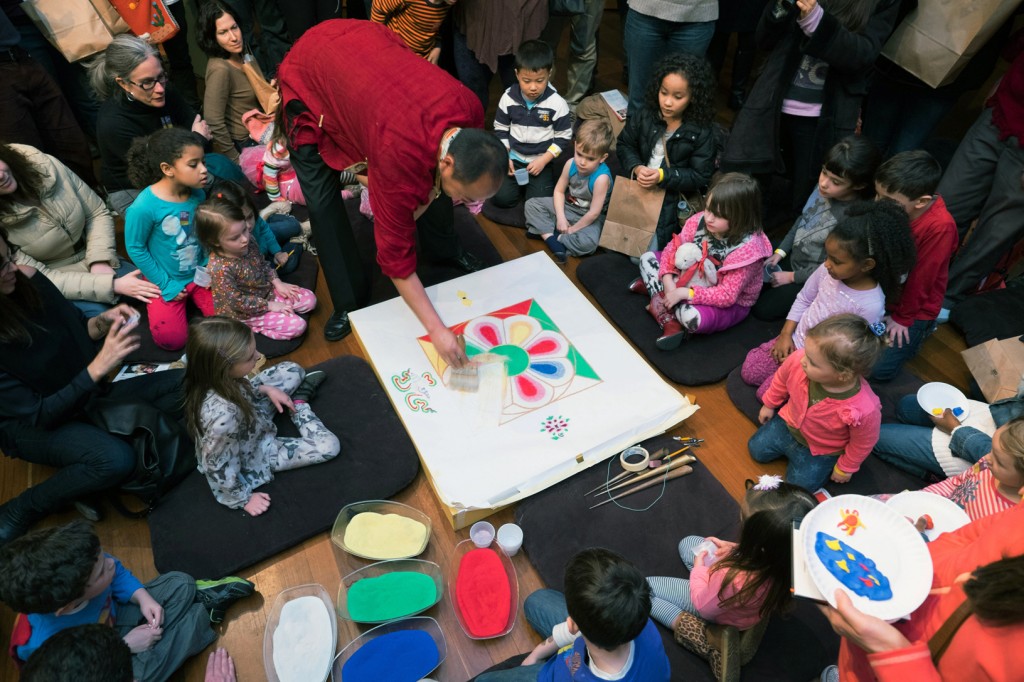
We followed by leading the children in their own sweep away of the collaborative mandala. At the count of 1-2-3 the children pushed all of the materials toward the middle of the mandala and were then able to choose a material to take home as a memento of their day. Many seemed to enjoy this part of the process most of all.

Over in the Education Center, we also had a number of lively activities. The Collaborative Wishes Map, where families made wishes for the New Year, was a big hit. I noticed a lot of wishes for puppies and iPods, but the one I identified with most might be this one…
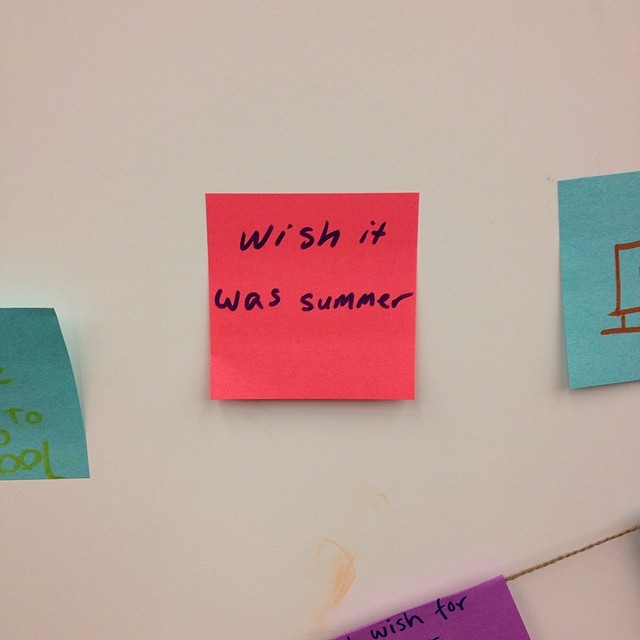
In the art studio, we had our ever popular “Tibetan Tea House” led by our guide, Tashi, who prepared and served Himalayan butter tea and khapsay (the traditional Losar cookie). Here’s Tashi showing a young visitor how to churn his own butter tea.
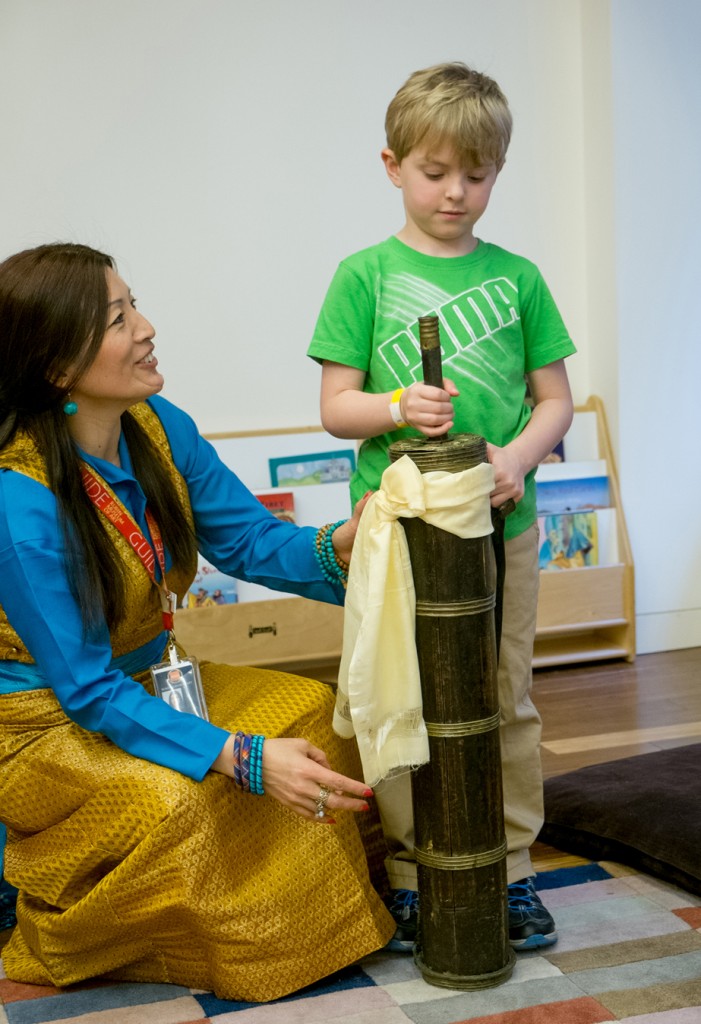
Next to our Tea House we had our Book Nook where families relaxed from the day’s activities and read Tibetan-themed books with one another.
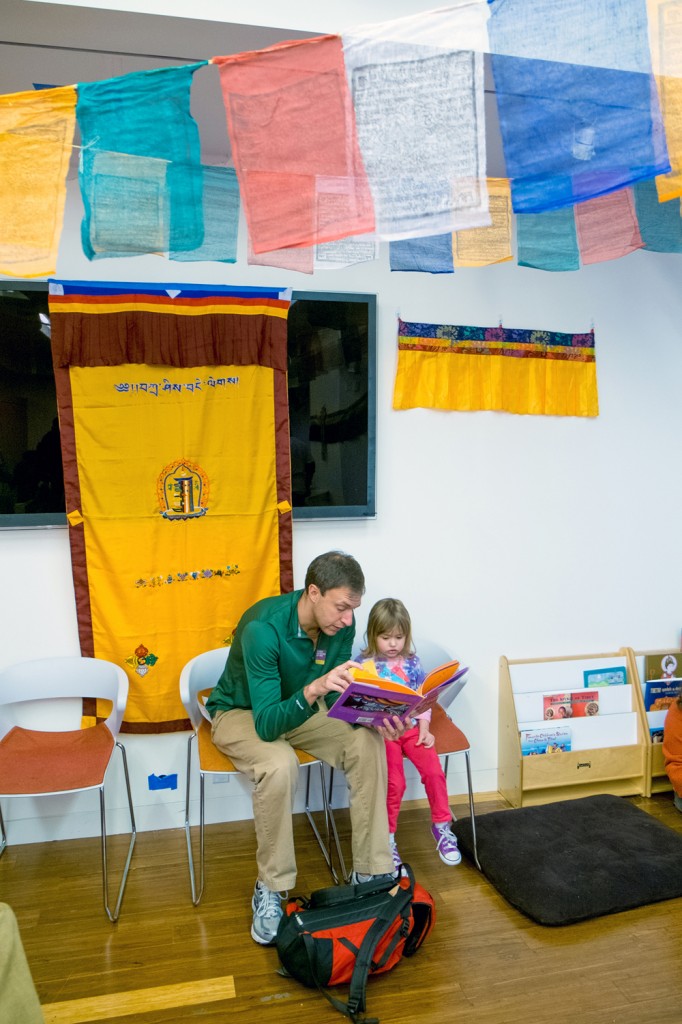
Also in the studio we had our master torma (butter) sculptor, Sonam Dhargye, creating colorful and intricate tormas. Along side Sonam, families sculpted their own mini tormas, using plasticine rather than butter.
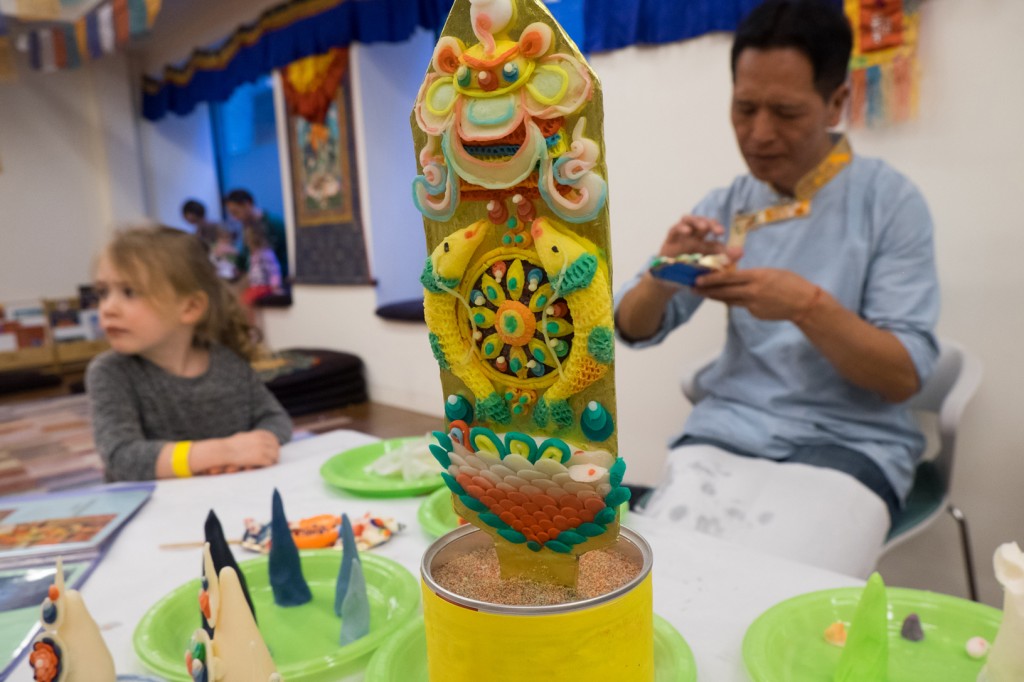

Donald and Shelley Rubin even joined in the festivities, alongside fellow staff members, Laura Lombard, Aoife, and Bill (what a great photo!).

It was truly an amazing, fun-filled Family Day and I cannot wait to do it again…next year 🙂 . If you did not have an opportunity to read about Losar Family Day in the NY Times, it’s never too late to check out a wonderful write-up by Laurel Graeber about our event.
Until next year…please continue to join us at Family Sundays, Family Art Labs, and Yak Packers!
Thanks to Michael Palma for taking all of our fantastic Family Day photos!



